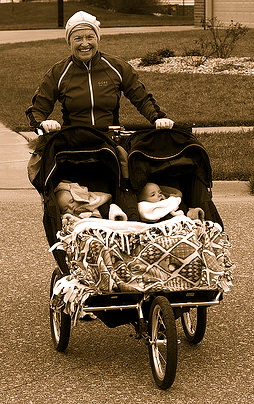Cross Fertilising ‘Injury Prevention’ journal (IP) and BJSM

The December 2011 issue of Injury Prevention, BJSM’s sister journal, highlights that musculoskeletal and activity-related injuries occur in both the old and the young. These are great targets for sports medicine professionals to ensure high quality of life through lifelong functionality and sustained active working lives. How? Through delivery of specific exercise and other interventions.
There is considerable scope for better integration of exercise and sports medicine approaches into the management of hip fracture patients. Bertram et al shows that hip fractures sustained by older people are associated with significant long-term disability. They concluded that 29% of older people who sustain a hip fracture do not reach their pre-fracture activity of daily living functionality, even one year after their fracture. Critically, this long term burden on both individuals and society could be significantly reduced if more was done to prevent the falls that lead to hip fractures from occurring in the first place. As a BJSM paper by Soo Lee and Ernst shows, delivery of exercise programs such as Tai Chi are effective for falls prevention.
In the same issue of the IP journal, Wilkinson et al describe injuries in British army infantry soldiers.The youngest army soldiers were most at risk of injury during pre-deployment training and this was most related to participation in sport and physical training activities. As an observational study, it is not fully clear why those with a younger chronological age should be most at risk but it could be related to the fact that the younger solders had spent a shorter time in training. They were also more likely to have a lower military rank and it was possible that this may have meant that they were inherently exposed to higher risk situations in their training because of the nature of the activities they were required to undertake. Despite the high physical nature of their training activities, aerobic fitness levels were not a risk factor for the traumatic injuries in this study. There could be scope to better design some of the pre-deployment training components to reduce the risk of injury in the future.
**************************************************************
Caroline Finch is an injury prevention researcher from the Australian Centre for Research into Injury in Sport and its Prevention (ACRISP) within the Monash Injury Research Centre, Monash University, Australia. She specialises in implementation and dissemination science applications for sports injury prevention. She is the Senior Associate Editor for Implementation & Dissemination for the British Journal of Sports Medicine and a member of the Editorial Board of Injury Prevention; both journals are published by the BMJ Group. Caroline can be followed on Twitter @CarolineFinch